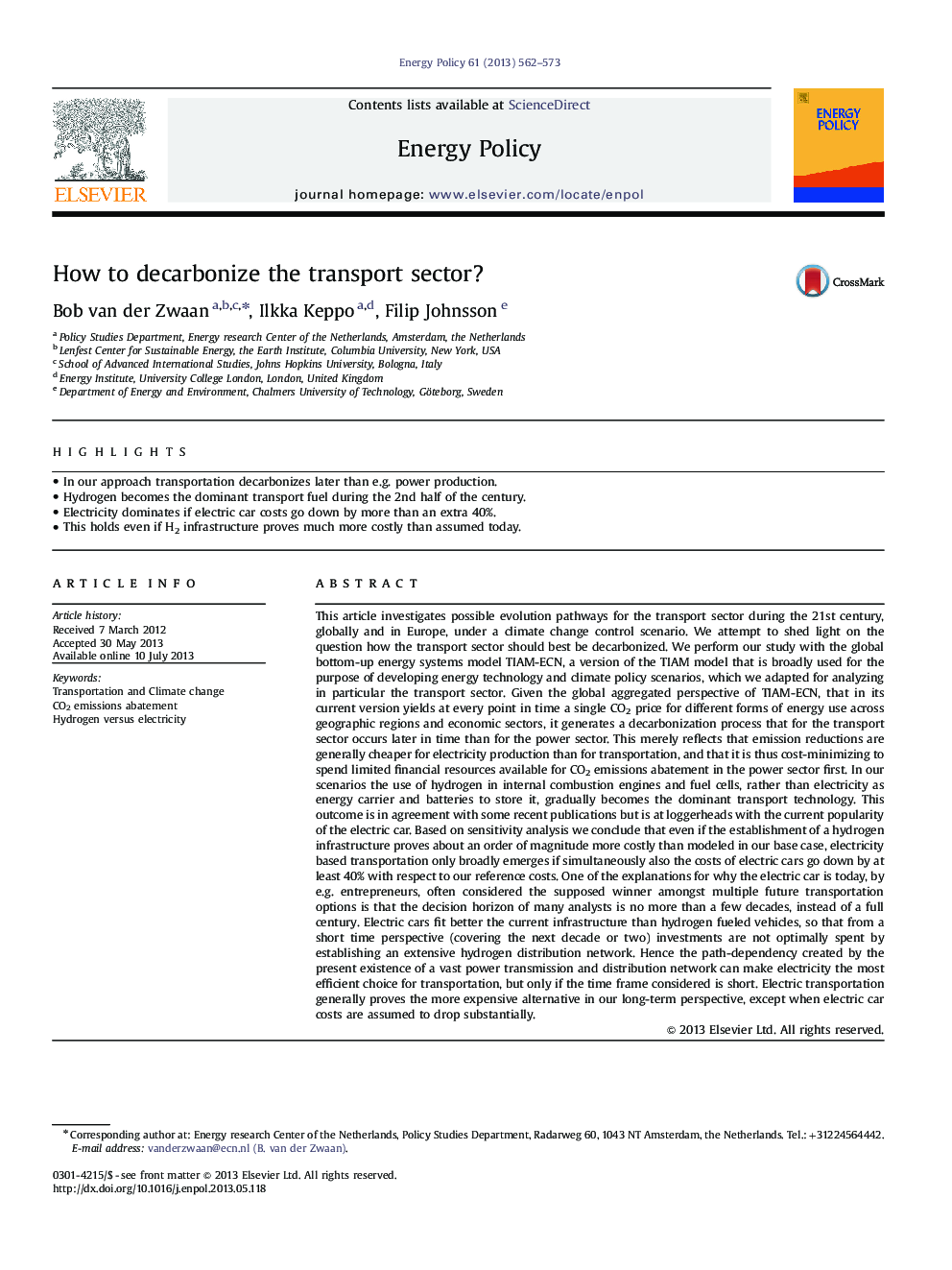| کد مقاله | کد نشریه | سال انتشار | مقاله انگلیسی | نسخه تمام متن |
|---|---|---|---|---|
| 7404567 | 1481297 | 2013 | 12 صفحه PDF | دانلود رایگان |
عنوان انگلیسی مقاله ISI
How to decarbonize the transport sector?
ترجمه فارسی عنوان
چگونه بخش حمل و نقل را گاز دهی کنیم؟
دانلود مقاله + سفارش ترجمه
دانلود مقاله ISI انگلیسی
رایگان برای ایرانیان
موضوعات مرتبط
مهندسی و علوم پایه
مهندسی انرژی
مهندسی انرژی و فناوری های برق
چکیده انگلیسی
This article investigates possible evolution pathways for the transport sector during the 21st century, globally and in Europe, under a climate change control scenario. We attempt to shed light on the question how the transport sector should best be decarbonized. We perform our study with the global bottom-up energy systems model TIAM-ECN, a version of the TIAM model that is broadly used for the purpose of developing energy technology and climate policy scenarios, which we adapted for analyzing in particular the transport sector. Given the global aggregated perspective of TIAM-ECN, that in its current version yields at every point in time a single CO2 price for different forms of energy use across geographic regions and economic sectors, it generates a decarbonization process that for the transport sector occurs later in time than for the power sector. This merely reflects that emission reductions are generally cheaper for electricity production than for transportation, and that it is thus cost-minimizing to spend limited financial resources available for CO2 emissions abatement in the power sector first. In our scenarios the use of hydrogen in internal combustion engines and fuel cells, rather than electricity as energy carrier and batteries to store it, gradually becomes the dominant transport technology. This outcome is in agreement with some recent publications but is at loggerheads with the current popularity of the electric car. Based on sensitivity analysis we conclude that even if the establishment of a hydrogen infrastructure proves about an order of magnitude more costly than modeled in our base case, electricity based transportation only broadly emerges if simultaneously also the costs of electric cars go down by at least 40% with respect to our reference costs. One of the explanations for why the electric car is today, by e.g. entrepreneurs, often considered the supposed winner amongst multiple future transportation options is that the decision horizon of many analysts is no more than a few decades, instead of a full century. Electric cars fit better the current infrastructure than hydrogen fueled vehicles, so that from a short time perspective (covering the next decade or two) investments are not optimally spent by establishing an extensive hydrogen distribution network. Hence the path-dependency created by the present existence of a vast power transmission and distribution network can make electricity the most efficient choice for transportation, but only if the time frame considered is short. Electric transportation generally proves the more expensive alternative in our long-term perspective, except when electric car costs are assumed to drop substantially.
ناشر
Database: Elsevier - ScienceDirect (ساینس دایرکت)
Journal: Energy Policy - Volume 61, October 2013, Pages 562-573
Journal: Energy Policy - Volume 61, October 2013, Pages 562-573
نویسندگان
Bob van der Zwaan, Ilkka Keppo, Filip Johnsson,
